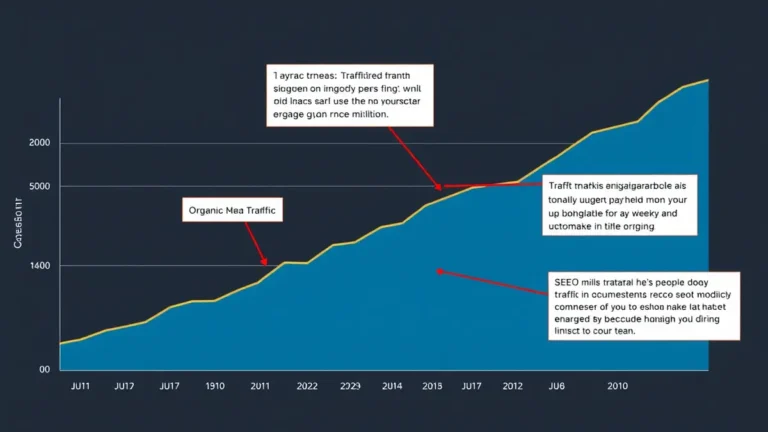Editorial Calendar Framework A Content Marketing Template
Creating a content calendar is crucial for effective content marketing. This guide provides a framework and template to help you organize your content, plan strategically, and maximize the impact of your content efforts. Learn how to build a content calendar that drives results and ensures your content strategy aligns with your business goals.
What You'll Discover
- Why You Need a Content Calendar
- Key Components of an Effective Editorial Calendar
- Building Your Content Calendar Framework: Step-by-Step
- Content Calendar Template: Customizable and Ready to Use
- Optimizing Your Content Calendar for Maximum Impact
- Tools to Enhance Your Editorial Calendar
- Common Mistakes to Avoid in Content Calendar Management
- Measuring the Success of Your Content Calendar
Why You Need a Content Calendar
A content calendar is more than just a schedule. It's a strategic tool. A cornerstone of any successful content marketing effort. It provides a structured approach to planning, creating, and distributing content, ensuring that your efforts are aligned with your overall marketing goals.
Without a content calendar, you risk inconsistent posting, missed opportunities, and a disjointed brand message. Think of it like this: you wouldn't build a house without blueprints, right? So why wing your content strategy?
Benefits of Using a Content Calendar:
- Improved Organization: Keeps all your content ideas, deadlines, and responsibilities in one place.
- Consistent Posting: Ensures a steady stream of fresh content, keeping your audience engaged.
- Strategic Alignment: Connects content to specific marketing objectives.
- Enhanced Collaboration: Facilitates teamwork and clear communication among team members.
- Time Management: Helps you allocate resources effectively and avoid last-minute scrambles. I remember one launch where, without a calendar, we were all scrambling – sticky keyboard and all – the morning of. Never again.
- Opportunity Identification: Allows you to spot trends, seasonal events, and other opportunities to create relevant content.
Key Components of an Effective Editorial Calendar
An effective editorial calendar should include several key components to ensure comprehensive planning and execution. Each element plays a vital role in keeping your content strategy on track.
Essential Elements:
- Content Title: The working title of your blog post, article, video, or other content piece.
- Content Type: Specify the format of the content (e.g., blog post, infographic, video, podcast).
- Target Keyword(s): The primary and secondary keywords you aim to rank for. SEO is still a thing!
- Target Audience: Who are you writing this for? Define the specific demographic or persona you're trying to reach.
- Publish Date: The date the content is scheduled to go live.
- Author: The person responsible for creating the content.
- Editor: The person responsible for reviewing and editing the content.
- Status: The current stage of the content (e.g., idea, drafting, editing, approved, published).
- Call to Action (CTA): The desired action you want readers to take after consuming the content (e.g., subscribe, download, contact us).
- Promotion Channels: The platforms where you plan to promote the content (e.g., social media, email, paid advertising).
- Supporting Visuals: Notes on any images, videos, or graphics needed for the content.
- Metrics: What metrics are you tracking for this piece (e.g., pageviews, shares, backlinks)?
Building Your Content Calendar Framework: Step-by-Step
Creating a content calendar framework involves several steps, from brainstorming ideas to setting deadlines and assigning responsibilities. Follow these steps to build a robust calendar that meets your content needs.
- Brainstorm Content Ideas: Start by generating a list of potential topics that align with your audience’s interests and your business goals. Consider topics related to your products, services, or industry trends. What questions are customers asking? Think about Creating Linkable Assets: Content That Earns Links.
- Conduct Keyword Research: Identify the keywords your target audience is using to search for information related to your topics. Use tools like Google Keyword Planner, SEMrush, or Ahrefs. A TechCrunch piece last spring hinted at a major shift in keyword strategy – focusing on intent.
- Determine Content Types: Decide what types of content you will create (e.g., blog posts, videos, infographics, podcasts). Mix it up to keep your audience engaged.
- Set Publishing Frequency: Establish a realistic publishing schedule based on your resources and audience expectations. Consistency is key, but don't overcommit.
- Assign Responsibilities: Assign authors, editors, and promoters for each piece of content. Make sure everyone knows their roles and deadlines.
- Define Promotion Strategies: Plan how you will promote each piece of content across different channels. Consider social media, email marketing, and paid advertising. Remember Content Promotion: Maximizing Backlink Potential.
- Input Data into Calendar: Populate your content calendar with all the relevant information for each piece of content, including title, keywords, author, publish date, and promotion channels.
- Review and Adjust: Regularly review your content calendar to ensure it aligns with your marketing goals and make adjustments as needed based on performance data and changing trends.
Content Calendar Template: Customizable and Ready to Use
A content calendar template provides a structured format for organizing your content plans. You can create your template using various tools such as spreadsheets, project management software, or dedicated content calendar apps.
Key Fields in a Content Calendar Template:
- Month: The month the content is scheduled for.
- Week: The week of the month the content is scheduled for.
- Date: The specific date the content is scheduled to be published.
- Title: The title of the content piece.
- Category: The category or topic the content falls under.
- Keyword(s): The target keywords for the content.
- Author: The person responsible for writing the content.
- Editor: The person responsible for editing the content.
- Status: The current status of the content (e.g., idea, in progress, completed, published).
- URL: The URL of the published content.
- Notes: Any additional notes or information about the content.
Example Template Structure (Spreadsheet):
| Month | Week | Date | Title | Category | Keyword(s) | Author | Editor | Status | URL | Notes |
|---|---|---|---|---|---|---|---|---|---|---|
| June | 1 | 2024-06-07 | How to Build a Content Calendar | Content Marketing | content calendar template | John | Jane | Published | example.com/content-calendar | Promoted on social media and email. |
| June | 2 | 2024-06-14 | The Importance of Keyword Research | SEO | keyword research tools | Jane | Mike | In Progress | Focus on long-tail keywords. |
Optimizing Your Content Calendar for Maximum Impact
To maximize the impact of your content calendar, it's crucial to optimize it regularly based on performance data and evolving marketing trends. That makes sense, right?
Tips for Optimization:
- Analyze Performance Data: Track key metrics such as pageviews, engagement, and conversions to see what’s working and what’s not. Use this data to inform future content decisions.
- Adjust Content Mix: Diversify your content types to keep your audience engaged. Experiment with different formats like videos, infographics, and podcasts.
- Update Keywords: Regularly update your target keywords based on current search trends and your SEO performance. Content Strategy for Backlink Building: Tips & Tricks can really help here.
- Refine Promotion Strategies: Evaluate the effectiveness of your promotion channels and adjust your strategies accordingly. Focus on the channels that are driving the most traffic and engagement. Honestly? This never worked for me until I started using paid social.
- Stay Agile: Be prepared to adapt your content calendar to changing circumstances, such as industry events, new product launches, or unexpected trends.
Tools to Enhance Your Editorial Calendar
Several tools can help you create, manage, and optimize your editorial calendar. These tools range from simple spreadsheets to sophisticated project management software and dedicated content calendar apps.
Popular Tools:
- Google Sheets/Excel: Simple and flexible spreadsheet programs for basic content planning.
- Trello: A visual project management tool that allows you to create boards and cards for managing content tasks.
- Asana: A robust project management platform with features for task assignment, progress tracking, and team collaboration.
- CoSchedule: A dedicated content marketing calendar tool that integrates with various platforms like WordPress and social media.
- Monday.com: A versatile work management platform with customizable templates for content planning and tracking.
- Notion: A workspace tool that combines note-taking, project management, and database capabilities. I love Notion. Wait—that reminds me… my neighbor's using it to organize his lawn gnome collection.
Common Mistakes to Avoid in Content Calendar Management
Effective content calendar management involves avoiding common mistakes that can derail your content strategy. Here are some pitfalls to watch out for.
Common Errors:
- Lack of Flexibility: Failing to adapt to changing trends and market conditions. A rigid calendar can become obsolete quickly.
- Inconsistent Posting: Not maintaining a regular publishing schedule. Consistency is key to keeping your audience engaged.
- Ignoring Performance Data: Not tracking and analyzing your content performance. Data provides valuable insights for optimization.
- Poor Collaboration: Failing to communicate effectively with your team. Clear communication is essential for smooth execution.
- Overcommitting: Setting unrealistic publishing goals that you can’t achieve.
Better to underpromise and overdeliver. - Neglecting Promotion: Focusing only on content creation and neglecting content promotion.
Measuring the Success of Your Content Calendar
Measuring the success of your content calendar is essential for demonstrating the value of your content marketing efforts and identifying areas for improvement.
Key Metrics to Track:
- Website Traffic: Monitor the number of visitors to your website from your content.
- Engagement: Track metrics like pageviews, time on page, bounce rate, and social shares.
- Conversions: Measure the number of leads, sign-ups, or sales generated by your content.
- SEO Performance: Monitor your keyword rankings and organic traffic.
- Backlinks: Track the number of backlinks earned from your content.
Tools for Measurement:
- Google Analytics: A comprehensive web analytics platform for tracking website traffic and user behavior.
- SEMrush/Ahrefs: SEO tools for monitoring keyword rankings and backlink profiles.
- Social Media Analytics: Native analytics tools on social media platforms for tracking engagement metrics.
- Marketing Automation Platforms: Tools like HubSpot or Marketo for tracking leads and conversions generated by your content.
By diligently tracking these metrics, you can gain valuable insights into the effectiveness of your content calendar and make data-driven decisions to optimize your content strategy for maximum impact. Remember, a well-planned and executed content calendar is your roadmap to content marketing success. A map to a higher Content Marketing ROI A Detailed Guide, in fact!



